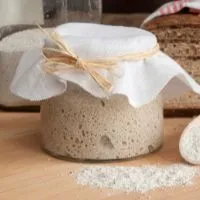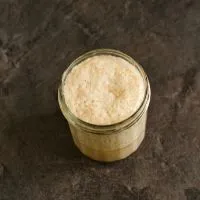Sourdough starter bubbling but not rising. If the sourdough starter is bubbling but not rising is not rushing, and you want to fix this trouble, then it is due to many factors like the type of flour you are using to make the sourdough and the temperature level of the room.
Environmental conditions matter a lot when you are making sourdough. If the place is warm, it will rise quickly without taking so much time, but if there is cold weather or the room temperature is low, the dough will bubble but rise.
Another big thing that matters a lot in sourdough is the ingredients’ quality. If the quality of the ingredients is high, then it will rise fastly, but if you are using low-quality of floor pr water, then it will not rise.
If you are reading this page, it means you are also facing difficulty in making the sourdough, so do not move forward because you are on the right page; this article will surely help you solve this problem.
Sourdough starter bubbling but not rising
If the starter is so for conscientiously bubbling but rising in the pot, then you should remove half of the sourdough and then feed the remaining part again.
Following are some reasons for the sourdough starter bubbling but not increasing.
1. Room temperature is cold
Room temperature matters a lot in the making of the sourdough starter. If the room temperature and environment are warm, then it is suitable for the dough to rise.
However, if the environment and spot are cold, it will not rise in jar and bubbles. If you are making the sourdough in the cold winter season, then it will be challenging in cold weather.
The ideal room temperature needed for making the sourdough is 80 degrees Farhenhights t0 85-degree Farhenhigts. This issue does not arise in the summer season. So if you are trying to make the sourdough starter in the winter, then make it at a warm temperature.
2. Quality of ingredients
The quality of ingredients matters a lot in the rising of dough in the jar. The sourdough starter is made up of the water and the floor. Always try to use filter water because if you use the tap water in the dough, then it may have minerals.
The floor is an essential ingredient to consume the floor: no chemicals and bleach. You can change the brand of the floor if one brand of the floor is creating an issue.
3. Ensure it is acquiring oxygen
If the sourdough starter is not rising, it may be because of less oxygen in the jar. If you have to cover the jar with a tight lid, remove it so that oxygen gets access to the dough. If you are afraid of bugs and ants, then you can also cover the jar with a paper towel.
Ensure to stir the starter after some time so that the oxygen reaches into the jar. The starter will rise if it is getting proper oxygen.
4. Keep it at less humidity
Suppose your sourdough starts appearing to be a little slim. It isn’t easy to see it is bubbling as the bubbles will remove. If you want to raise your starter, then give it floor for just two to three times.
It will firm the mixture in the jar. After giving it floor two to three times, keep it where there is less humidity and dehydration.
5. Wrong feedings
It is essential to feed your sourdough starter in a proper ratio of water and floor because if the ratio of the ingredients is not accurate, then it will kill the starter and will not rise.
If your mixture looks very dry or wet, or it is not rising the way you want, then don’t worry; nothing is finished. You can still refresh it by adding more water and floor.
6. HOW TO FIX YOUR SOURDOUGH STARTER
Conclusion
The bottom line of the discussion is that if your sourdough starter is bubbling but not rising, there are various factors behind this problem.
The most crucial factor is the room environment because the starter is raised in warm conditions, so always try to keep it in a warm place and ensure proper access to oxygen in the mixture.
Related Guides

